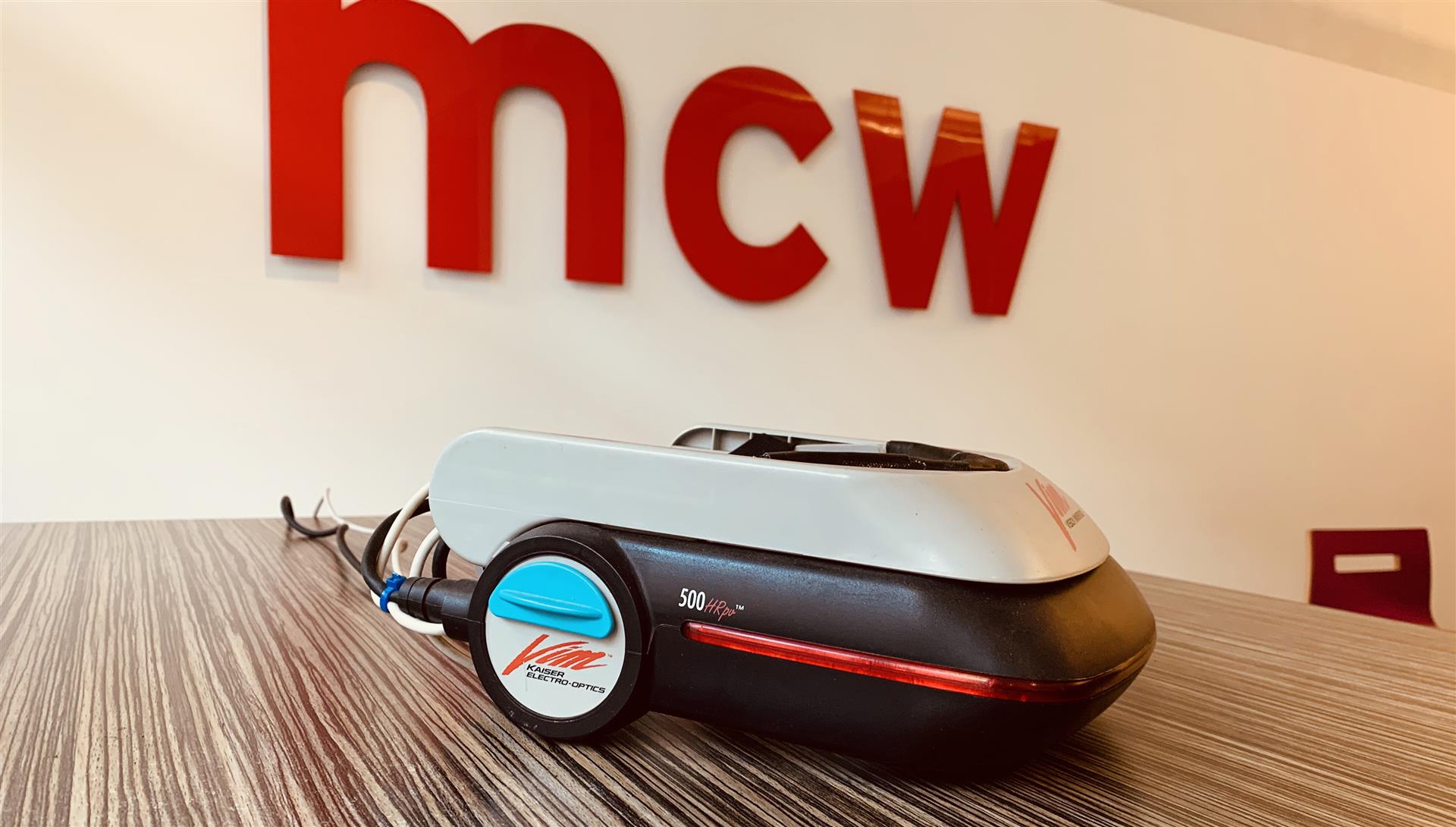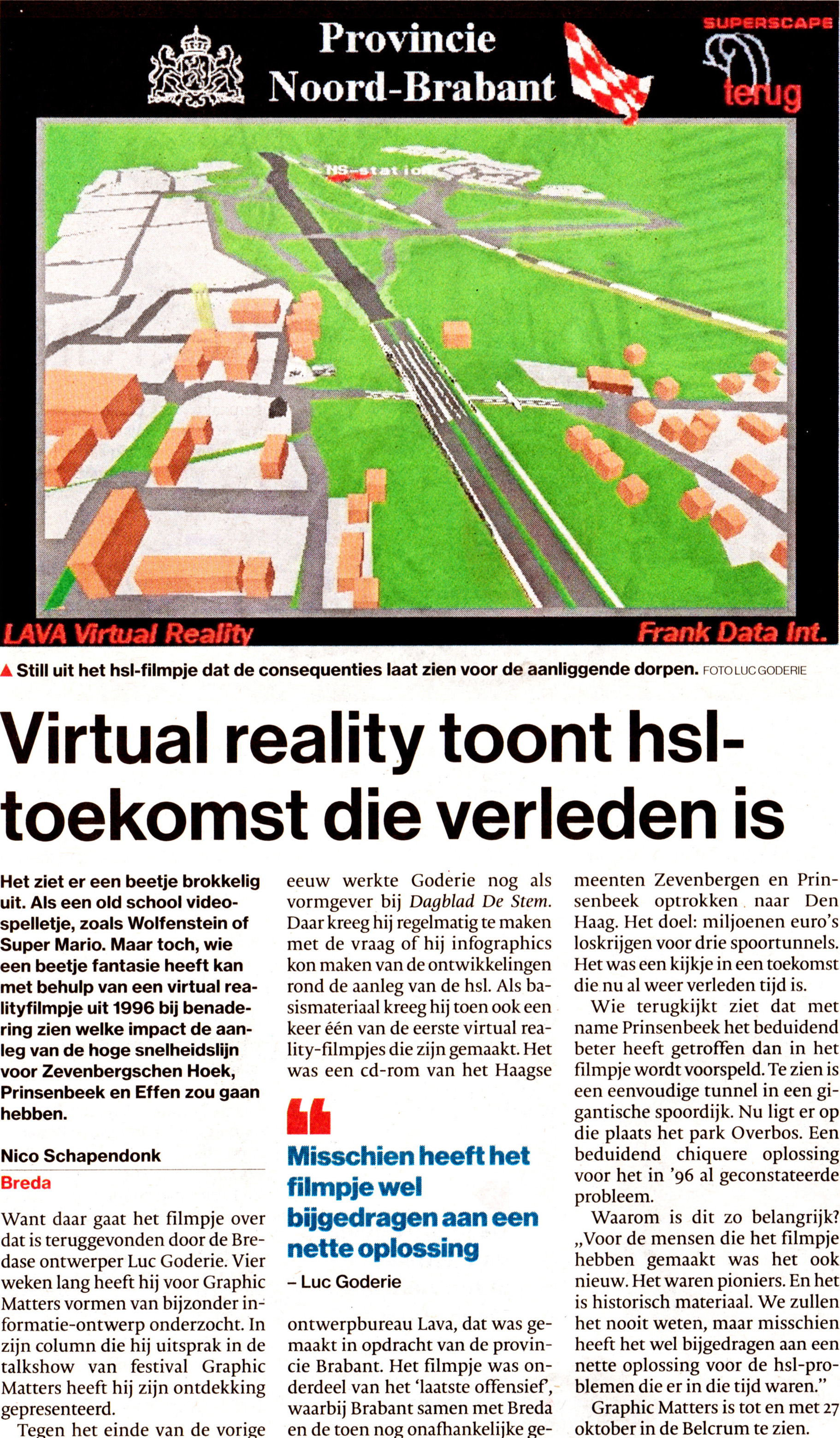In 1993 MCW - then called LAVA - developed one of the first VR applications in the Netherlands on the impact of the planned High-speed Rail for Zevenbergschen Hoek, Prinsenbeek and Effen. This VR app has recently been found in the archives and brought back to life.
MCW was one of the pioneers in the field of VR. Founded in 1993 as LAVA Virtual Reality, we started experimenting with the technology. At that time we already felt that VR would create new opportunities, and change interaction with computers. Yet it took 25 years for VR to take off.
One of MCW's first productions was to visualise the impact of the construction of the High Speed rail Line for Zevenbergschen Hoek, Prinsenbeek and Effen. The goal was to convince the central government that money had to be made available for several railway tunnels on this route.
In 1996, commissioned by the Province of North Brabant, we created a 3D VR model, with the software Superscape, in which the various options were shown.
This VR app is was paired with one of the first VR-glasses, the Kaiser-electro-optics, shown to the commissioner of the Queen Houben, the deputy of Harten and the mayors of Breda, Prinsenbeek and Zevenbergen.
One of the first Kaiser-electro-optics VR glasses
It was the first time VR technology was used in government communications in the Netherlands.
The production was re-discovered by Luc Goderie, designer at the time at Dagblad De Stem. During the festival Graphic Matters Breda Luc will give a column about information superpower in the four talk shows. In collaboration with the Breda city archives Luc searched for special documents, designs or moments of special information transfer. Following a post in De Stem at the time, Luc went in search of the virtual reality mentioned. And with success! The complete model has been found and made presentable again.
Besides the fact that it is very nice that after 23 years of pioneering this project was discovered in the archives, it also shows how we look at VR productions. VR has always been a hype. 23 years ago walking into a pixelated virtual house already appealed to the imagination. Part of our work consisted of advising and presenting VR and its unprecedented possibilities. Films such as The Lawnmower Man and Disclosure strengthened the desire to be able to experience a virtual world. Gradually the projects started coming in, initially with a strong focus on architecture and spatial design.
We felt that the technology had potential, but it was a huge search for exactly where the added value could be achieved.
A lot has happened in 23 years. Of course, VR has been used for a long time and frequently in high-quality simulators. But from the moment VR also became available to the consumer, the VR market really took off.
At MCW, we are still looking for projects that add value. The Rescue Experience we created for Holmatro is one such example. Or the Virtual Tomb Experience for the Hong Kong Science Museum. VR productions in which we let visitors experience something that would never be possible in any other way.




